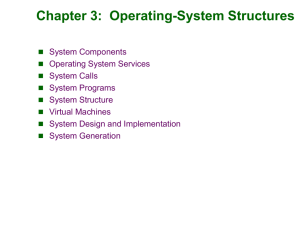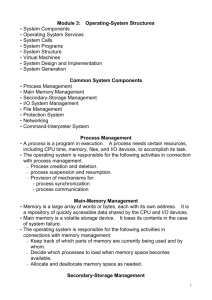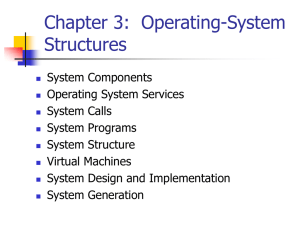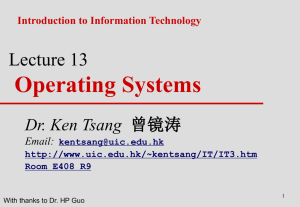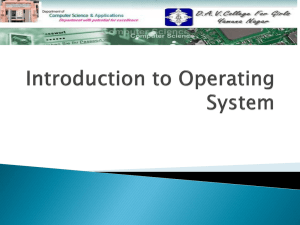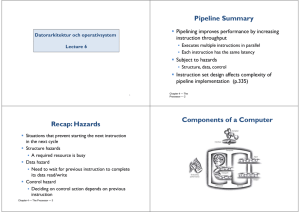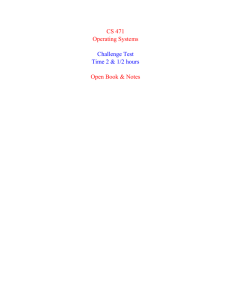Operating Systems Exam: Von Neumann, Processes, Memory
advertisement
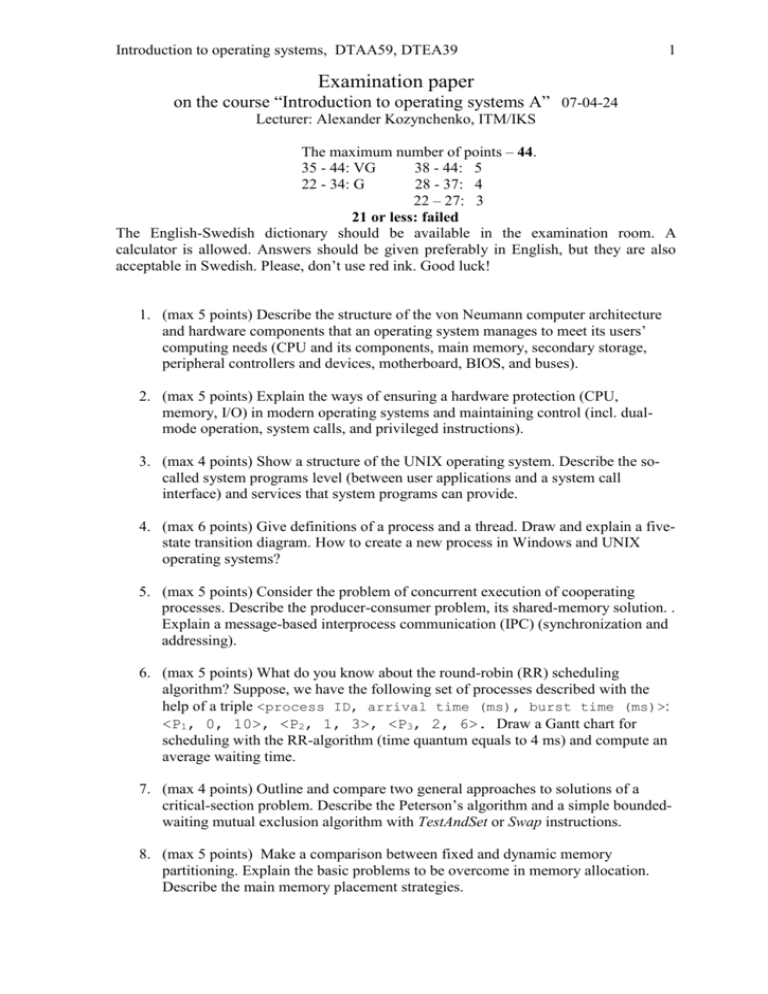
Introduction to operating systems, DTAA59, DTEA39 1 Examination paper on the course “Introduction to operating systems A” 07-04-24 Lecturer: Alexander Kozynchenko, ITM/IKS The maximum number of points – 44. 35 - 44: VG 38 - 44: 5 22 - 34: G 28 - 37: 4 22 – 27: 3 21 or less: failed The English-Swedish dictionary should be available in the examination room. A calculator is allowed. Answers should be given preferably in English, but they are also acceptable in Swedish. Please, don’t use red ink. Good luck! 1. (max 5 points) Describe the structure of the von Neumann computer architecture and hardware components that an operating system manages to meet its users’ computing needs (CPU and its components, main memory, secondary storage, peripheral controllers and devices, motherboard, BIOS, and buses). 2. (max 5 points) Explain the ways of ensuring a hardware protection (CPU, memory, I/O) in modern operating systems and maintaining control (incl. dualmode operation, system calls, and privileged instructions). 3. (max 4 points) Show a structure of the UNIX operating system. Describe the socalled system programs level (between user applications and a system call interface) and services that system programs can provide. 4. (max 6 points) Give definitions of a process and a thread. Draw and explain a fivestate transition diagram. How to create a new process in Windows and UNIX operating systems? 5. (max 5 points) Consider the problem of concurrent execution of cooperating processes. Describe the producer-consumer problem, its shared-memory solution. . Explain a message-based interprocess communication (IPC) (synchronization and addressing). 6. (max 5 points) What do you know about the round-robin (RR) scheduling algorithm? Suppose, we have the following set of processes described with the help of a triple <process ID, arrival time (ms), burst time (ms)>: <P1, 0, 10>, <P2, 1, 3>, <P3, 2, 6>. Draw a Gantt chart for scheduling with the RR-algorithm (time quantum equals to 4 ms) and compute an average waiting time. 7. (max 4 points) Outline and compare two general approaches to solutions of a critical-section problem. Describe the Peterson’s algorithm and a simple boundedwaiting mutual exclusion algorithm with TestAndSet or Swap instructions. 8. (max 5 points) Make a comparison between fixed and dynamic memory partitioning. Explain the basic problems to be overcome in memory allocation. Describe the main memory placement strategies. Introduction to operating systems, DTAA59, DTEA39 2 9. (max 5 points) On secondary storage, a file consists of a collection of blocks. Compare three main methods for allocating blocks to files. Illustrate your answer, at least for one method, with an example of a file allocation table and block arrangement at the secondary storage.




